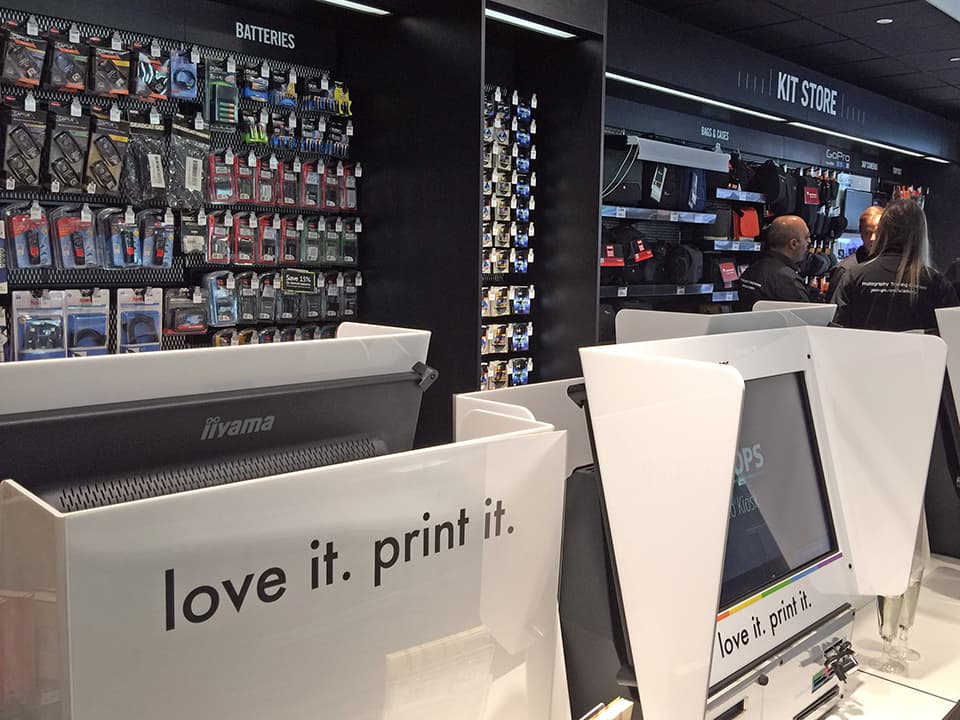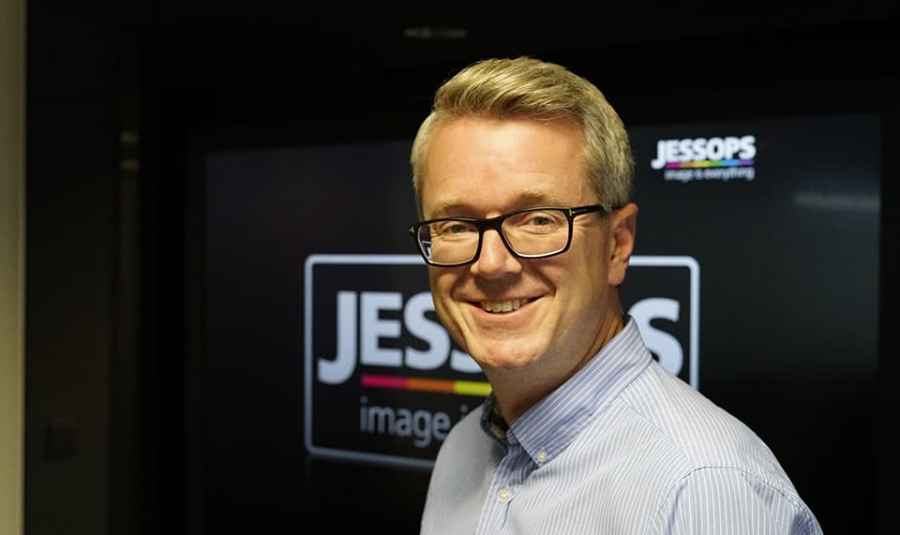Jessops CEO Neil Old
In a wide-ranging interview, Jessops CEO Neil Old (above) was asked how many more stores Jessops may open. ‘I think there could be another 20,’ he replied.
‘We’ve been opening six high street stores per year for the past two years. I can see this continuing for at least another two to three years.’
He added: ‘We’ve got a list of 10 or 12 towns and cities that fit our criteria and that we’re actively looking to go into, when we find the right premises.
‘But there could be more beyond that.’
Jessops now employs 440 staff across its 52 stores – nearly all from the old business. This figure will swell to more than 500 if Jessops sticks to its plan of opening a dozen new stores over the next 18 months or so, not forgetting employing up to 150 more people that Jessops hires each Christmas.
Expansion into Europe is also possible, though such a move is years away said Old who explained that the focus remains on continued growth in the UK.
‘Once we’ve got a robust and stable UK business we can look at moving into mainland Europe.
‘We’re on track at the moment. We’ve got 20% like-for-like sales growth and a web business that’s growing, which in a market that is considerably down in absolute terms is very pleasing.’
Jessops and Sainsbury’s
AP noted that 10 of Jessops stores are Sainsbury’s concessions. So, does Jessops have plans to expand those too?
‘Again, if the location of the Sainsbury’s is right and fits our demographic, then of course we’d be interested, but we’re not going to be just filling space in a random corner of south London.’
The Sainsbury’s shops, where demand for photo-processing business is much higher, bring in a different type of customer.
‘What you don’t have, not surprisingly perhaps, are the photography enthusiasts who come in on a Saturday to browse and try out kit and have a chat.’
Understanding customers
Old says Jessops chooses would-be store locations on the basis of its understanding of the customer – a process aided by information gleaned from its database of hundreds of thousands of customers.
Jessops uses the research to establish who its customers are, where they live, how far they are prepared to travel, and their average spend.
‘Where are those clusters of enthusiasts who are prepared to pay £500 and upwards on a new camera? They’re in Tunbridge Wells, Canterbury, Brighton… There’s a lot of science behind it.’
Old is clear where Jessops’ target market lies and the importance of providing a quality customer service: ‘We’re not talking to the pros. Some do come in, but they’re not our typical customer.
‘Equally, we see a lot of the occasional happy snappers at Christmas. But our core customers, who we’ll see for probably 10 months of the year, are the keen hobbyists; those who have a serious interest in photography – either it’s their first love and they’re really passionate about it, or it’s a companion hobby to their first love.
‘Maybe they’re a member of the National Trust and they want a good camera to be able to take great photographs of the stately homes and gardens.
‘So, it’s important for us that when a customer comes in they meet people who are passionate about photography and can talk to them on their level.’
 Inside the Jessops store in Brighton, East Sussex which opened in April © Nigel Atherton
Inside the Jessops store in Brighton, East Sussex which opened in April © Nigel Atherton
Something for everyone
Jessops prides itself on offering ‘unbiased advice’. Old says: ‘All our guys are equally confident to talk about any brand of camera.’
Unsurprisingly perhaps, given the enthusiast customer base, Jessops’ core products are mirrorless cameras, DSLRs and high-end compacts.
‘Mirrorless is going from strength to strength; there’s still a level of decline in DSLRs but the high-end ones perform better [and] large-sensor compacts are doing well.’
Old notes how Sony has come to the fore as a real success story. ‘What they do so well is innovate – it’s just off the scale what they’re achieving. They’ve got some great products – like the A7 series, which is doing incredibly well.
‘They don’t have the biggest lens range yet but there’s enough to give our core hobbyist customer the confidence to buy into the system.’
Jessops also sells second-hand cameras through Camera Jungle – a business it took over at the end of 2015 and which is based at Jessops’ Oxford Street store in London.
It also houses the latest tech, including drones and 360° cameras like the Ricoh Theta.
Keeping up with the times
Under previous owners, it could be said that some new technology did Jessops few favours as it struggled to adapt fast enough to the threat posed by the smartphone revolution.
Asked how smartphones impact the current business these days, Old said: ‘There are more pictures being taken now than at any time in history, and I couldn’t be happier.
‘These people have started coming in and printing some of those pictures, and we’re getting the opportunity to talk to them about maybe purchasing their first camera. We’re helping to take them on a journey.’
To help customers edit and crop their smartphone photos and turn them into prints, Jessops now employs ‘photo sales experts’ who are equipped with the bespoke skills.
The chain also operates a print-and-collect service, so customers can order prints online and collect in-store.
‘We’ll also be offering it the other way around, so if you’re in store and decide you want to, say, produce a photo book, you’ll be able to start the project in the store, set-up the basic templates with the advice of the staff, and then carry on with it at home later.’
 © Nigel Atherton
© Nigel Atherton
Click-and-collect surge
Click-and-collect is Jessops fastest growing sales channel, eclipsing its in-store and web business – a development Old describes as ‘massive’ for the company over the past three years.
‘It’s had very significant double-digit growth. It generally takes about a year for a store to find maturity, and click-and-collect follows that curve.
‘As you’re becoming established in a new catchment, click-and-collect is virtually nonexistent for the first six months. But once people have got used to you being there they’ll start thinking “Don’t forget we can pop in and pick it up on Saturday.”
‘You don’t buy online – you just reserve it. So you’re not obligated to purchase it. You go into the store, you know they’ve got it, [and] it’s all ready for you. You have a play with it, talk to the sales guys and make a decision. It’s a huge convenience for the customer.’
Jessops has also seen a marked growth in photo books sales, mainly online, through its tie-up with printing firm CEWE.
However, the fastest growing part of the market for Jessops is wall art. ‘Poster prints, canvas prints, acrylics… Enthusiasts want to share their work, not just online but on the walls of their house.
‘In fact, there has been a general resurgence in the popularity of printing, just like with vinyl records. ‘People want physical evidence of what they have created. I fundamentally believe that the more people print, the more engaged they will become with photography.’
Old stresses that Jessops is not about selling cameras but about ‘selling photography’– and a large part of that is printing and sharing.
‘To give someone a framed photograph is a highly personal thing, and a lot of thought goes into it. There’s still a magic around looking at a physical print.’
Jessops Academy
Another key element of the customer experience is the Jessops Academy that starts at a one-to-one level, akin to a tutorial. ‘You’re buying your first product and you want to be able to move that dial away from “Auto” and into other functionality…
‘We can book you into a one-to-one [session] for an hour, half an hour – whatever fits in with you. The amazing thing is the journey you take people on with the Academy.
‘As retailers, we all like to talk about lifetime value, [and] with the Academy we see repeat visits all the way through.
‘We have a very structured sales process that explores what customers’ needs are to ensure that the camera is right for them.
‘This year alone we’re looking to spend a considerable amount on [the] further development of our teams.
‘We’ve just launched an online training platform for them so that they can log in on their phone or tablet and learn about new products. Our colleagues are at the core of everything we do.’
 Staff cut the ribbon at the opening of the new Brighton shop, Jessops’ 51st store (CEO Neil Old is pictured centre) © Nigel Atherton
Staff cut the ribbon at the opening of the new Brighton shop, Jessops’ 51st store (CEO Neil Old is pictured centre) © Nigel Atherton
Lessons from the past
It has been a remarkable turnaround for Jessops, since it was taken over by Dragons’ Den entrepreneur Peter Jones in 2013. And it is clear that the high-profile persona of the Jessops chairman played a big role in winning back consumer confidence. ‘In the very early days, the fact that Peter Jones stood behind the business counted for a lot.
‘We were completely debt free, and that first Christmas we had Peter on TV putting his name behind it. People trust him – his reputation is worth far more to him than he would potentially lose with Jessops. So that got us airborne, just off the tarmac.
When the new Jessops launched its first 28 stores, reopened from the old business, its former customers returned.
‘We had good luck cards, congratulations cards and people coming in just to say “Great to see you back.”’
Old recalls a genuine outpouring of sympathy and sadness in the country over what happened when Jessops closed its 187 stores in January 2013.
‘Jeremy Clarkson even wrote a piece in The Times saying how sad he was about it. So when we re-opened there was a lot of goodwill.’
Old blames Jessops failure on a ‘very badly run business that got bloated with central costs and just fell over’.
He added: ‘When Jessops went under, I don’t think it was due to poor service or there being no demand.’
‘A lovely industry to work in’
Asked how he can ensure that what happened to Jessops before won’t happen again, the CEO is upbeat about what lies ahead for the photo industry in which he is still a relative newcomer.
‘All of the lessons for our future are in our past,’ replies Old whose pre-Jessops career includes roles at Comet, Dixons and Carphone Warehouse.
‘One small advantage that you get when you emerge from a mess like that… is that you can clear out the dead wood and cherry pick the best people – the ones who really got the business and who cared.
‘Some of them had gone off and found other jobs in the meantime, but once we told them we were coming back they resigned immediately and were back on day one before the stores opened, helping to fit them out.
‘And they did this because it’s well known that photography is a lovely industry to work in.
‘I’ve only been in the industry for four years but it really is – I’ve never known anything like it in my career.’







